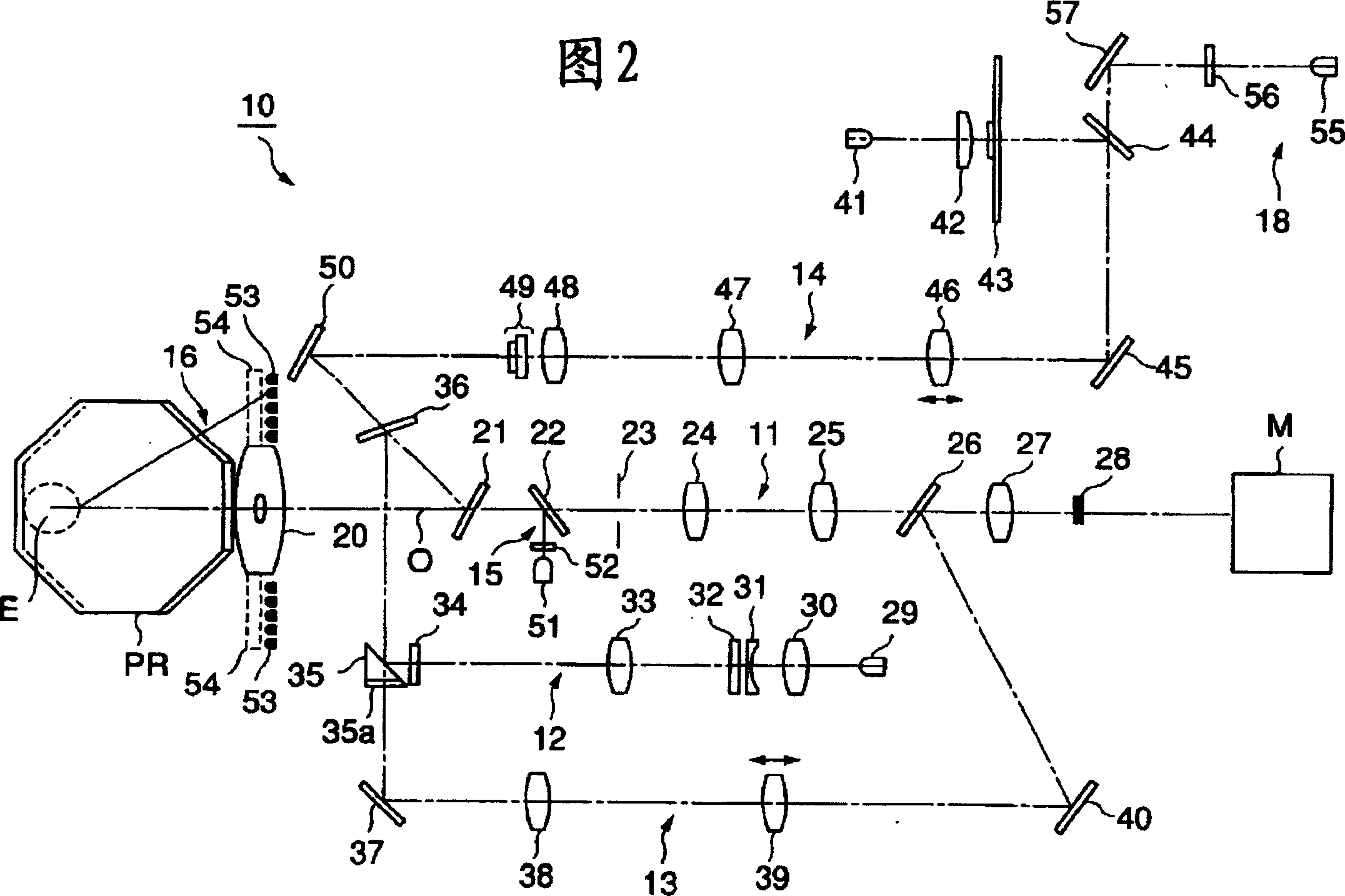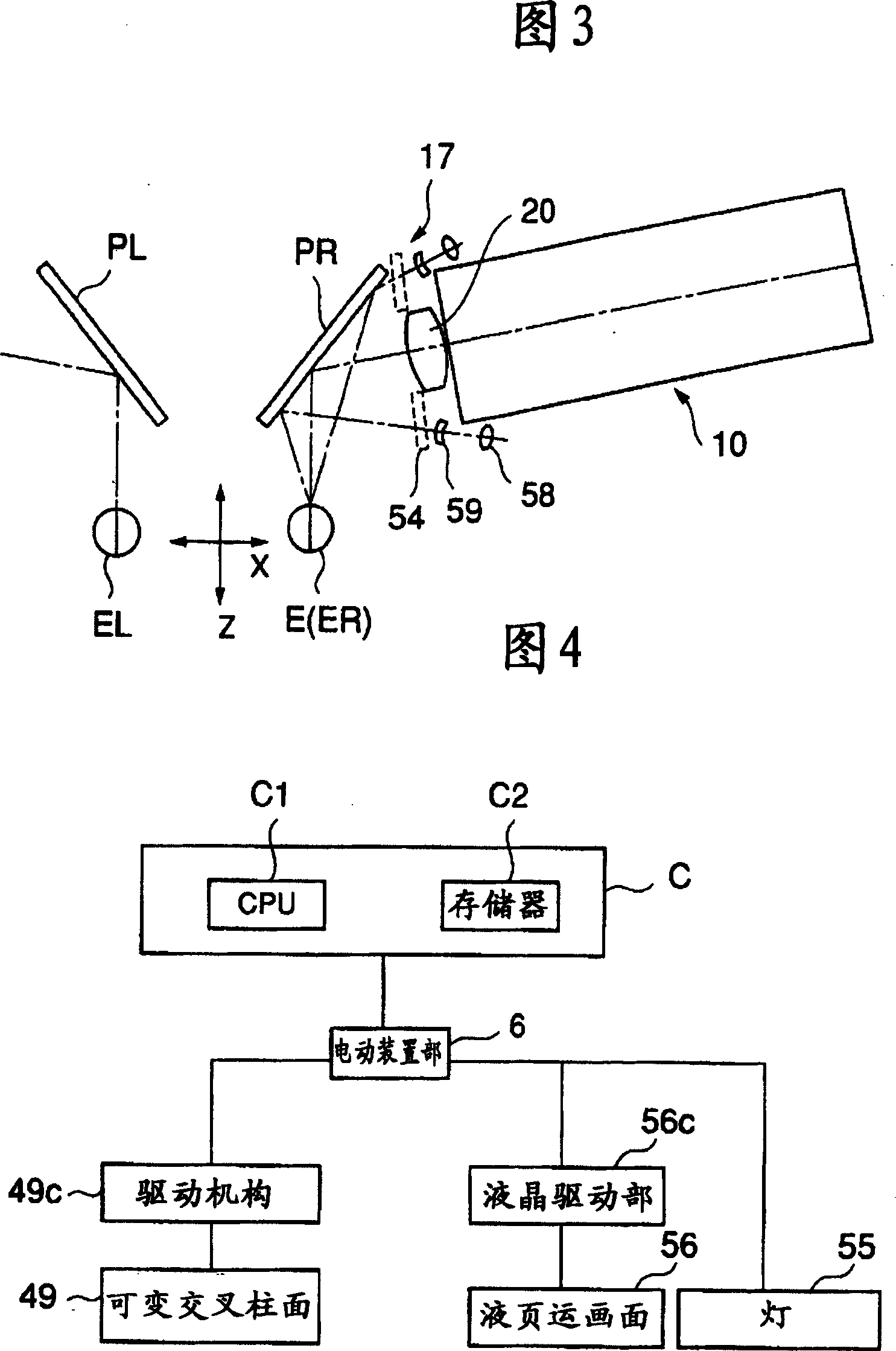Ophthalmologic apparatus
An eye detection and eye technology, used in eye testing equipment, comprehensive refractometers, medical science, etc., can solve problems such as damage to the reliability of eye detection, prolonged eye detection, and difficulty in identification.
- Summary
- Abstract
- Description
- Claims
- Application Information
AI Technical Summary
Problems solved by technology
Method used
Image
Examples
Embodiment 1
[0034] [the whole frame]
[0035] FIG. 1 is a perspective view showing an outline of the overall configuration of an eye detection device 1 according to Embodiment 1. As shown in FIG. The eye testing device 1 is a device capable of performing astigmatism testing in addition to self-perceived power measurement and other-perceived power measurement alone or in connection with assistants guiding multiple subjects. The eye detection based on the eye detection device 1 is automatically carried out along the given steps. First, the approximate value of the refractive power of the detected eye E is obtained through the measurement of the power of the other person's perception method, and the measurement of the power of the self-perception method is performed based on the approximate value. For measurement, after the astigmatism power is obtained by the astigmatism test, the spherical power is adjusted, and the visual acuity test is performed with the last obtained power. It should b...
Embodiment 2
[0085] Below, refer to Figure 11 Embodiment 2 of the present invention will be described. Figure 11 An identifier display member 60 is shown instead of the liquid crystal screen 56 of the eye detection device 1 . Figure 11 (a) is a perspective view showing a schematic structure when viewing the identifier display member 60 from the front, Figure 11 (b) is a side view showing a schematic structure of the identifier display member 60 . It should be pointed out that in Figure 11 (b) shows a state where the liquid crystal screen 56 of the eye detection device 1 is replaced by the identifier display member 60, and the lamp 55 and the identifier display member 60 constitute identification information generating means.
[0086] As shown in the two figures, the identifier display member 60 includes: an identification target plate 61 for displaying an identifier “1” 61a and an identifier “2” 61b; and a shutter 62 for covering a part of the identification target plate 61 . The ...
Embodiment 3
[0092] The purpose of Embodiment 3 of the present invention described below is to improve the ability to recognize an optotype by simultaneously projecting a colored fusion frame and an optotype. The fusion frame is an optotype for promoting the fusion of the respectively recognized optotype images from the left eye EL and right eye ER when eye detection is performed by simultaneously projecting optotypes to both eyes of the subject. It should be noted that this embodiment has almost the same structure as the above-mentioned Embodiment 1, so only its characteristic part (identifier generating optical system) will be described.
[0093] As described above, the identifier generating optical system 18 is built in each of the left-eye head 3L and the right-eye head 3R. In this embodiment, as the lamp 55 of the identifier generating optical system 18, for example, a multi-color LED that switches between red light and green light is arranged. The switching operation by this multico...
PUM
 Login to View More
Login to View More Abstract
Description
Claims
Application Information
 Login to View More
Login to View More - R&D
- Intellectual Property
- Life Sciences
- Materials
- Tech Scout
- Unparalleled Data Quality
- Higher Quality Content
- 60% Fewer Hallucinations
Browse by: Latest US Patents, China's latest patents, Technical Efficacy Thesaurus, Application Domain, Technology Topic, Popular Technical Reports.
© 2025 PatSnap. All rights reserved.Legal|Privacy policy|Modern Slavery Act Transparency Statement|Sitemap|About US| Contact US: help@patsnap.com



